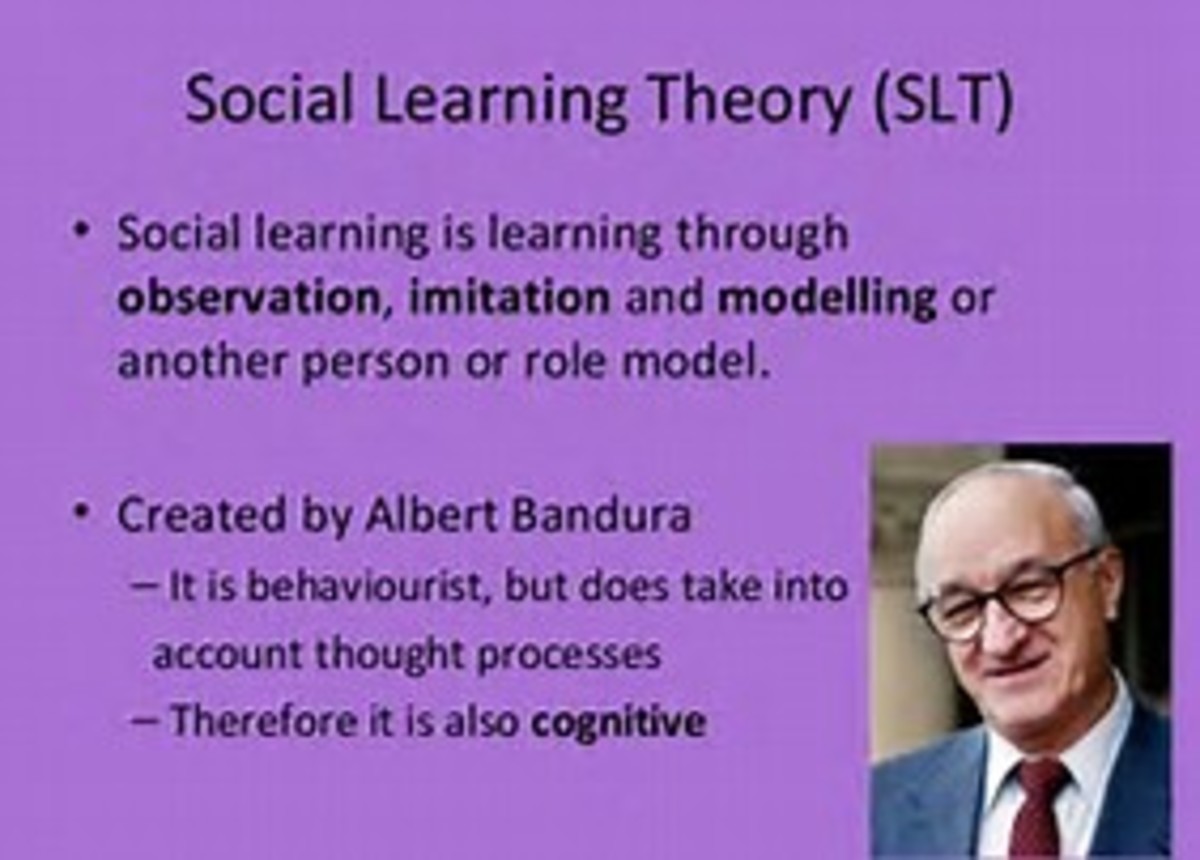Principles of Ethics in Persuasion
Persuasion - The Ability to Persuade Others
Persuasion is the ability to inspire others to act or to think in a certain manner. During the 1970s, “persuasion” held both positive and negative connotations. In many instances, people at that time defined the word “persuasion” in a positive ways, such as the ability “to inspire” or “to motivate” someone or an audience. Many people also considered the word “persuasion” to have a negative connotation, such as having the connotation of violence, and thought that it was better to not teach “persuasion” as a subject in college (Eadie, 2009).
Persuasion is used by communicators to obtain (persuade) a particular response (behavior) from their audience. Ethics are necessary in all areas of our lives so that people can live together in harmony. The principles of ethics in persuasive communication are the same as they are in general ethics (Schrier, 1930). For this research paper, research has been conducted on the topics of persuasion and ethics in persuasion. This paper is the product of the research conducted on persuasive communication, on ethical theories, and on the impact and importance of ethics in persuasive communication.
Theory of Reasoned Action
The theory of reasoned action (TRA) was developed by Fishbein & Ajzen in 1975. A strength of the TRA was its effectiveness at communicating about health topics. A weakness of this theory was that it did not take into account the three components that effect a person’s behavior, such as norms, attitudes, and control (Magee, 2014).
Theory of Planned Behavior
The theory of planned behavior guides intellectuals to effectively detect normative and attitudes, and to regulate views that affect behavior. This theory can effectively lead numerous efforts of persuasion. It has enabled us to calculate actions that arise from thinking purposely. The theory of planned behavior also contains the component of perceived behavioral control (PHC). By detecting the significance of dogmas about behavior, norms, and control, the theory of planned behavior is most beneficial as a structure to direct a persuasion campaign. These theories are considered to be some of the most significant theories in persuasion, particularly with regard to thoughtful, deliberate action (Magee, 2014).
The strengths of the theory of planned behavior (TPB) is similar to the theory of reasoned action, but the improvement is that TPB also integrates the construct of perceived behavioral control, which is added to outlook toward actions and subjective norms as the antecedents impacting both the goal to perform an action and the performance of said action (Ajzen, 1991). This theory takes into account a person’s norms, attitudes, and control by exerting an effect on a person’s behavior (Magee, 2014).
Listed here are weaknesses of the theory of planned behavior (TPB). This theory cannot alter an individual’s behavior. Fishbein and Ajzen (2010) recognized that this theory provides diminutive direction in determining what sorts of messages may be the most effective in altering those beliefs. By concentrating on beliefs, the theories offers a modest explanation of an individual’s behavioral objective. This attention arises at the cost of including other kinds of elements that may also affect behavioral objectives. The theory of planned behavior is not helpful for providing direction that is specifically about methods in which “to craft persuasive appeals for a specific goal” (Magee, 2014, ch. 5 Summary).
Dual-Processes Models of Persuasion
The strengths of dual-process models afford a beneficial means of discerning about ways in which we process data. The DPMs can be very helpful in terms of determining ways in which ethical principles so that they will take their business to businesses that operate ethically (Carrigan & Attalla, 2001).
Persuasion can be conducted in an ethical manner. It is not necessary for persuasion to be done in an unethical manner. When persuasion is done correctly, both parties (the consumer and the company) can be winners. The triumphs of business experts can best be measured by their ability for achieving their objectives. Those objectives are attained usually “by reasoning, persuading and inspiring others to share a vision and to pursue a common purpose” (Cialdini, 2015, p. 1).
Legislators often utilize rational pleas, such as emotion, cognitive biases, and subliminal messaging in order to sway voters to approve actions that support civic objectives. Conversely, these communication schemes have been extensively disparaged for depending on irrational causes rather than logical argument. Instead, legislators have learned that the American people are not easily swayed by sensible pleas to dry evidences. Therefore, many legislators take advantage of the feelings or reasoning preconceptions of the U.S. people in order to gain votes that support those politicians’ objectives. This can be seen right now by watching the televised debates of the presidential candidates who are running to become the next president of the U.S. The presidential debates show the various candidates working hard to persuade and win majority voter support by making big promises to support and improve the various interests of the U.S. voters. Public health campaigns in America also use emotional appeals and visual messages to persuade people.
A five-part test defining the ethical boundaries of persuasive communications was recommended and produced. This five-part test acts as a set of conduct-guiding principles that directs correspondents toward ethical implication in persuasion. Together, these ethical principles hold the appropriate climax of skilled persuasive communication. Those five principles of ethics that a communicator should use in persuasive communication that are virtuous and ethically correct are truthfulness in the message, authenticity of the persuader, respect for the audience, equity of the persuasive appeal, and social responsibility (for the common good) (Baker, 2001).
The capacity to take part in moral thinking in advertising is becoming popular, both in obligation and in significance. The advertising capacity is in a good position to advice top administration about moral issues. Advertising experts know the estimations of key publics included with moral quandaries, and can direct thorough moral investigations to control the approaches of their associations, and also in interchanges with the public and with the news media. Watchful and predictable moral examinations encourage trust, which improves the building and support of connections – all things considered, that is a definitive motivation behind the advertising capacity (Bowen, 2007).
Ethics in Persuasion - Conclusion
Aristotle reflected persuasion to be a method of communication in which the communicator successfully molds his/her communication in a manner so that he gains influence over a specific audience under an exclusive set of features. The methods of persuasion are logos (logic), pathos (emotion of sadness or pity), and ethos (character). (Conor, 2013-2014)
Utilizing persuasive communication in an ethical manner makes for a win-win situation which means that the persuader wins and the audience (those persuaded) wins. Persuasive communication that is conducted in an ethical manner successfully meets these five principles of ethics: truthfulness, authenticity, respect, equity, and social responsibility (Baker, 2001b). This research paper has provided valid and relevant information on the topics of persuasion, the theories of persuasion, the impact of ethics on persuasion, and the importance of ethics in persuasive communication.
References
Ajzen, Icek (1991) "The theory of planned behavior" Organizational behavior and human decision processes 50 (2): 179–211.
Baker, S., & Martinson, D. L. (2001). The TARES test: Five principles for ethical persuasion. Journal of mass media ethics, 16(2/3), 148-175. Academic Search Complete, EBSCOhost.
Bowen, S. (2007, Oct. 30). Ethics and public relations. Institute for public relations. Retrieved online at http://www.instituteforpr.org/ethics-and-public-relations/
Carrigan, M. & Attalla, A. (2001). The myth of the ethical consumer - do ethics matter in purchase behavior? Journal of consumer marketing, Vol. 18 Iss: 7 pp. 560 – 578/ http://dx.doi.org/10.1108/07363760110410263
Cialdini, R. (2015). How to protect yourself from unethical persuasion. Government executive, 1. Business Source Elite, EBSCOhost.
Conor, Neill. (YouTube video, 2013, Jan. 14). (Web, 2015, Nov. 13). “What Aristotle and Joshua Bell can teach us about persuasion” online video clip. YouTube.
Eadie, W.F. (2009). Sage Publications, Inc. 21st-century communication: A reference handbook. ISBN 978-1-4129-5030—5. Retrieved online at https://books.google.com/books?isbn=0791445720
Magee, R. (2014). Persuasion: A social science approach. San Diego, CA. Bridgepoint Education, Inc. This text is a Constellation™ course digital materials (CDM) title.
Schrier, W. (1930). The ethics of persuasion. Quarterly journal of speech, 16(4), 476. Communication & Mass Media Complete, EBSCOhost.








